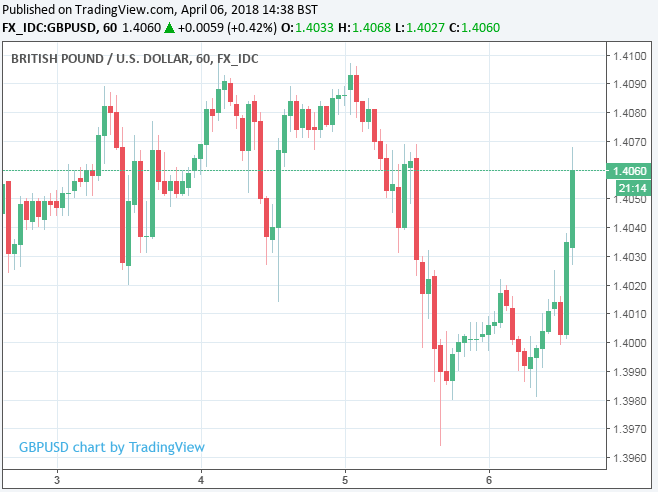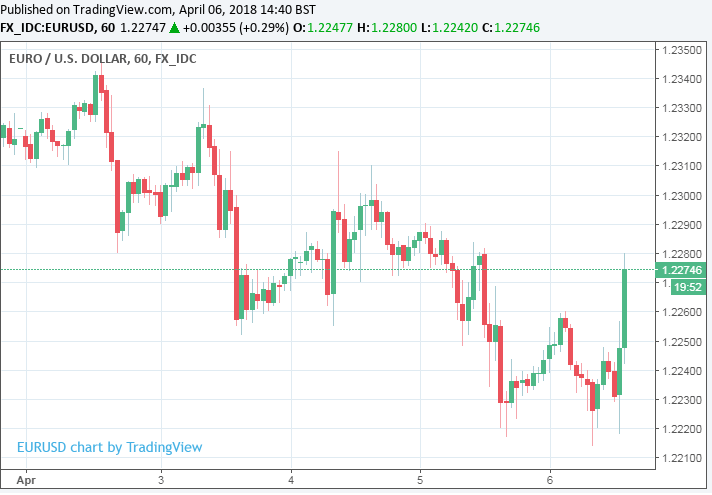US Dollar Pares Gains after Nonfarm Payrolls Slump by Two Thirds in March
- Written by: James Skinner
-
- Non-farm payrolls fall by two thirds to just 103k in March.
- Unemployment holds at 4.1% and wages rise 0.3%.
- US Dollar pares gains following the report.

© Nazli Sart, Adobe Stock
The Dollar pared earlier gains during the noon session in London Friday after data showed the US economy adding new jobs at less than half the pace economists had expected for the March month.
Nonfarm payrolls grew by just 103,000 during the recent month, which is down from 313,000 in February and far below the economist consensus for a reading of 188,000. Separately, the unemployment rate held steady at 4.1% for the month when markets had been looking for a 10 basis point fall to 4.0%.
However, and on a brighter note, average household incomes grew by 0.3% during the recent month, which is up from the 0.1% seen in February and in line with the consensus forecast of economists.
"The Fed will be primarily focused on the 0.3% m/m increase in average hourly earnings, which pushed the annual growth rate up to 2.7%, from 2.6%. As with core inflation, the annual rate is still muted, but there is clear evidence of an acceleration over the past few months," says Paul Ashworth, chief US economist at Capital Economics. "Overall, looking through the volatility, employment growth is trending higher and wage growth is starting to heat up."
Unemployment, jobs and wages matter because they are leading indicators of demand growth and domestic price pressures, which are all important for Federal Reserve inflation forecasts and market expectations for interest rates over the coming months.
"It's often hard to get a consistent message from the US employment data, and today was no exception," says Andrew Grantham, an economist at CIBC Capital Markets. "With the wage figures no higher than expected, markets are likely to focus more on the headline payrolls print and as such today's data could be slightly negative for the US Dollar and positive for fixed income."

Above: Pound-to-Dollar rate shown at hourly intervals.
The US Dollar index, which measures the Dollar's performance against a basket of currencies, was quoted 0.04% higher at 90.48 following the release after paring back an earlier 0.11% gain Friday. The Pound-to-Dollar rate was quoted 0.16% higher at 1.4026 after reversing an earlier loss while the Euro-to-Dollar rate pared losses to trade just 0.07% lower at 1.2238.

Above: Euro-to-Dollar rate shown at hourly intervals.
America's greenback had risen while risk assets such as stock markets were lower during the morning after President Donald Trump threatened to impose another round of tariffs on imports from China in response to the country's Tuesday retaliation against earlier White House levies on medical, pharmaceutical and industrial machinery equipment.
The imports targeted by the White House are worth around $60 billion to the Chinese economy. China responded to those measures Tuesday with tariffs of its own, targeting a range of US agricultural exports worth roughly $50 billion, leading markets to fear a so called trade war breaking out. It isn't clear what goods the latest round of American tariffs will target if the White House goes ahead but the value concerned is in the region of $100 billion.
China, which is a great economic power, is considered a Developing Nation within the World Trade Organization. They therefore get tremendous perks and advantages, especially over the U.S. Does anybody think this is fair. We were badly represented. The WTO is unfair to U.S.
— Donald J. Trump (@realDonaldTrump) April 6, 2018
"While this may not be official policy just yet, it is the clearest insight yet into the mind-set of a White House that is seemingly adamant to secure a flagship trade policy win," says Viraj Patel, an FX strategist at ING Group. "Equally, we do not see this US administration easing up on their protectionist rampage until one of three things occur."
Patel and the ING team say a sharp narrowing in the US trade deficit, particularly the bilateral deficit with China, might be enough to persuade the White House to ease off on its aggressive trade policy. Although this may be unlikely as data released Thursday showed the gap between US imports and exports widening to a decade high of -$57.6 billion in February.
Another factor that could encourage a change of heart in the White House is China taking the next round of tariffs on the chin, allowing them to go unchallenged. Patel notes the domestic political and economic costs of this may be high. However, this option may be more likely as Chinese imports from the US were just $154 billion in 2017, which means there may only be another $104 billion of goods it can impose levies on before policymakers run out of proverbial ammunition.
Last but not least, signs President Trump and the Republican Party are on course for a decisive victory in November's midterm elections may also be enough to encourage a change of heart in the White House, according to ING. After all, combating the trade deficit with China and righting perceived flaws in international trade agreements was a central tenet of the Trump presidential campaign so with a series of aggressive measures taken on these fronts during recent months, any associated polling boost may see the White House become more malleable.
"We remain of the view that a weaker US dollar is a necessary interim equilibrium to counterbalance the risks of President Trump’s mercantilist ‘America First’ policy agenda," says Patel.
Advertisement
Get up to 5% more foreign exchange by using a specialist provider to get closer to the real market rate and avoid the gaping spreads charged by your bank when providing currency. Learn more here.










